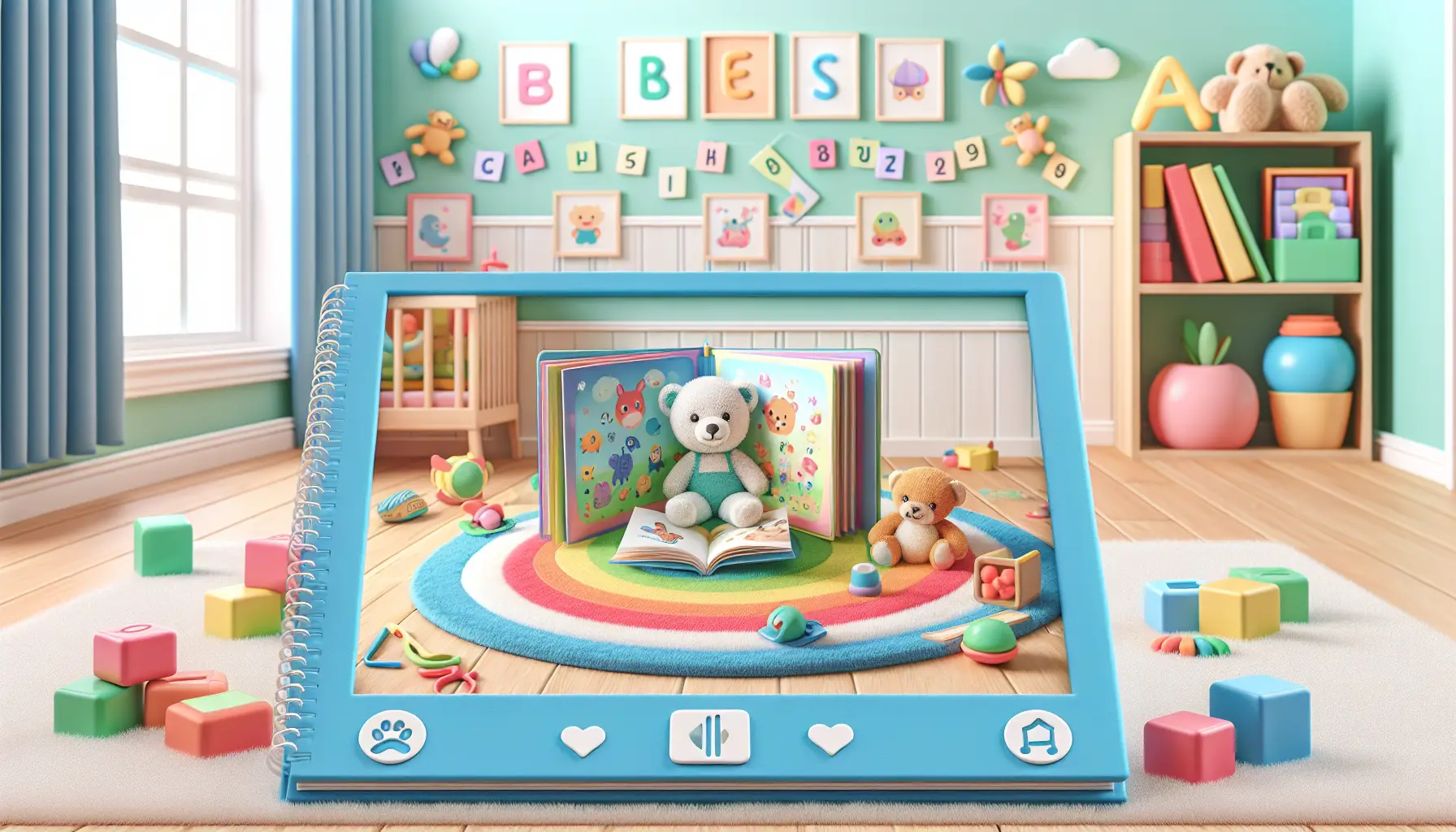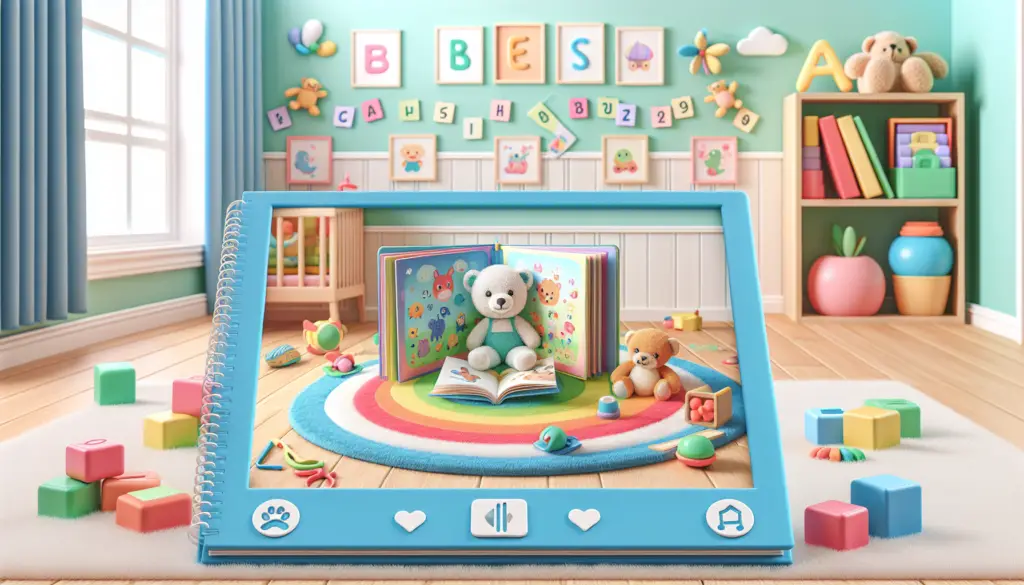Imagine the excitement of watching your baby’s development as they learn to communicate with you through pointing! Teaching your baby to point is an important milestone that can enhance their understanding of the world around them and facilitate effective communication. In this article, we will provide you with simple yet effective strategies to teach your baby how to point, helping them express their needs and desires while strengthening your bond.
Why is Pointing Important?
Encourages communication
Pointing plays a crucial role in communication development for babies. When a baby points at something, they are not only directing their attention to it but also indicating their desire or interest in that object. By encouraging babies to point, we are fostering their ability to express their wants and needs effectively. This early form of nonverbal communication lays the foundation for language development and paves the way for more advanced communication skills in the future.
Develops cognitive skills
Pointing is not only about communication; it also aids in the development of cognitive skills in babies. When a baby learns to point, they are actively engaging their brain and building connections between objects, actions, and words. Through pointing, babies are able to categorize and label the world around them, helping them to learn concepts, improve memory, and broaden their understanding of their environment.
Builds social interaction
Pointing helps babies to forge connections and engage in social interactions with others. When babies point at objects, they are seeking shared attention and inviting others to join in their exploration. Pointing can lead to meaningful interactions between parents, caregivers, and peers, creating opportunities for bonding and fostering social skills. By encouraging pointing, we are promoting social engagement and building the foundation for healthy social interactions in the future.
When Do Babies Start Pointing?
Typical age range
Babies typically start pointing around the age of 9 to 14 months. However, it is important to remember that every child develops at their own pace, and there can be variations in this timeline. Some babies may start pointing earlier, while others may take a little longer. It’s essential to observe your baby’s individual progress and not rush their development.
Signs of readiness
Before babies begin pointing, they show certain signs of readiness. These signs include an increased interest in their surroundings and a growing understanding of cause and effect. Babies may start to reach for objects, grasp them with their hands, and explore them with curiosity before they progress to pointing. Additionally, they may imitate pointing gestures they see from adults or older siblings. Observing these signs of readiness can help parents and caregivers identify when to introduce pointing activities.
Creating Pointing Opportunities
Provide a variety of objects
To encourage pointing, it is important to provide babies with a variety of objects to explore. Offer toys, household items, and natural objects with different shapes, colors, and textures. This variety will pique their curiosity and make pointing more exciting and engaging for them.
Use familiar and new items
Incorporating both familiar and new items into pointing activities helps babies expand their vocabulary and understanding of the world around them. Familiar objects provide a sense of security and allow babies to practice pointing to items they are already familiar with. Introducing new items stimulates their curiosity and encourages them to explore and point to unfamiliar objects.
Include pictures and books
Pictures and books are excellent tools for pointing activities. Use picture books with clear and colorful illustrations, pointing out and naming objects on each page. This helps babies associate the pictures with real-life objects and hones their ability to identify and label items. Additionally, displaying pictures around the house and labeling them can create a print-rich environment, further reinforcing their understanding of the world.
Engage in play activities
Integrating play activities into pointing exercises can make the whole experience more enjoyable for babies. Play songs or rhymes that involve pointing to body parts or objects. For example, you may sing “Head, Shoulders, Knees, and Toes” and encourage the baby to point to each body part as you sing. Playful interactions make learning a fun and interactive experience for babies, enhancing their engagement and overall development.
Modeling Pointing
Demonstrate pointing gestures
Babies learn best by imitation, so it is crucial to model pointing gestures for them. Point to objects or body parts yourself, emphasizing the action and guiding their attention towards what you are pointing at. By observing you, babies will start to understand the purpose and significance of pointing, gradually imitating and incorporating it into their own communication repertoire.
Exaggerate movements
When modeling pointing, it is beneficial to exaggerate your movements to make them more prominent and noticeable. This helps babies clearly see and understand the gesture, making it easier for them to imitate. By exaggerating your pointing gestures, you provide a clear visual cue for babies to follow and learn from.
Label what you are pointing at
While modeling pointing, it is essential to verbally label the object or body part you are pointing at. This helps babies associate the gesture with the corresponding word, strengthening their understanding and vocabulary. By consistently labeling what you are pointing at, you are providing babies with a clear link between gestures, objects, and language, facilitating their overall language development.
Encouraging Baby to Point
Offer praise and encouragement
When babies start to point or attempt to point, it is crucial to offer praise and encouragement. Positive reinforcement motivates babies to continue practicing and refining their pointing skills. Celebrate their efforts by smiling, clapping, and using encouraging words like “Good job!” or “You’re doing great!” This positive feedback helps babies feel confident in their abilities and boosts their self-esteem.
Omit immediate reinforcement
While offering praise and encouragement is important, it is equally essential to avoid immediately reinforcing pointing by giving the baby the requested object. Delayed reinforcement encourages babies to use pointing as a means of communication rather than relying solely on adults to meet their needs. By waiting a few seconds before fulfilling their request, babies learn that pointing is an effective way to communicate and understand the connection between their gesture and the desired outcome.
Use hand-over-hand guidance
If a baby is struggling to point or hasn’t yet mastered the skill, using hand-over-hand guidance can be helpful. Gently take their hand and guide their finger to point at the desired object. This physical support helps babies understand the physical movement involved in pointing and reinforces the gesture. Gradually reduce the amount of assistance provided over time, allowing the baby to gain independence in their pointing abilities.
Using Pointing as a Communication Tool
Encourage pointing for desired objects
As babies become more proficient in pointing, it is essential to encourage them to use this skill to communicate their desires or needs. When a baby points at a desired object, acknowledge their request and respond accordingly. For example, if the baby points at a bottle, you can say, “Oh, you want your bottle. Here it is!” By reinforcing their pointing as a means of communication, babies learn the power of using intentional gestures to convey their needs effectively.
Teach basic requests through pointing
Pointing can also be used to teach babies basic requests. Start by presenting two objects and asking the baby to point to the desired one. For example, hold a toy car and a ball and ask, “Which one do you want?” By pointing to their preferred choice, the baby learns to associate their gesture with the specific request. This simple activity helps expand their vocabulary and fosters their ability to express their preferences.
Choosing Appropriate Pointing Activities
Point to body parts
To promote body awareness and language development, engage babies in pointing to body parts. This can be done during playtime or during daily routines such as dressing or bathing. Point to your own body parts and encourage the baby to do the same. Repeat the names of the body parts as you point to them, reinforcing their understanding and vocabulary.
Point and name objects
Select a variety of objects and encourage the baby to point to each one as you name them. For example, you can show them a stuffed animal and say, “Can you point to the bear?” Then, display a toy car and ask them to point to it as you say, “Now, where’s the car?” This activity helps babies associate words with objects, strengthens their vocabulary, and enhances their cognitive development.
Point to pictures in a book
Using picture books is an excellent way to engage babies in pointing activities. Choose books with clear illustrations and ask the baby to point to different objects or characters as you read. For example, you can say, “Where’s the dog?” and encourage the baby to point to the dog in the book. This activity not only promotes pointing skills but also enhances their visual perception, comprehension, and language abilities.
Working with Sensory Issues and Pointing
Adjusting environmental stimuli
Children with sensory issues may find certain environmental stimuli overwhelming or distracting, which can affect their ability to focus on pointing activities. It is essential to create a calm and comfortable environment that minimizes sensory distractions. Dimming lights, reducing noise levels, and providing a clutter-free space can help create an environment conducive to learning and pointing.
Using alternative pointing techniques
For some children who have difficulty with fine motor skills or sensory sensitivities, traditional pointing with the index finger may be challenging. In such cases, alternative pointing techniques can be utilized. These techniques can include using a closed fist, a different finger, or even an object to point with. The key is to find a method that feels comfortable and manageable for the child, ensuring they can still engage in and benefit from pointing activities.
Seeking Professional Help
Consulting a pediatrician
If you have concerns about your baby’s development or their progress in pointing, it is always a good idea to consult a pediatrician. They can provide guidance, assess your baby’s overall development, and address any specific concerns you may have. It is essential to remember that every child develops at their own pace, but a healthcare professional can help you determine if further evaluation or assistance is needed.
Receiving guidance from a speech therapist
A speech therapist specializes in communication and language development in children. If you have concerns about your baby’s pointing skills or overall communication abilities, seeking guidance from a speech therapist can be beneficial. They can provide targeted strategies and activities to support your baby’s language development and help address any specific issues or delays they may be experiencing.
Monitoring Progress and Adjusting Strategies
Recognizing milestones
As your baby progresses in their pointing skills, take the time to recognize and celebrate milestones. Each baby develops at their own pace, so it’s essential to embrace their individual progress. Celebrate when they first start to point, when they consistently point to objects correctly, and when they use pointing as a means of communication. These milestones reflect their growth and development in communication and cognitive skills.
Adapting teaching methods
Babies learn and develop at a rapid pace, so it is important to adapt teaching methods as they grow. As they master basic pointing skills, introduce more challenging activities to further stimulate their cognitive growth. Increase the complexity of the objects and concepts involved in pointing activities, allowing their skills to expand and evolve. By continually adapting teaching methods, you can ensure that your baby is receiving appropriate and engaging opportunities for their continued development.
In conclusion, pointing is a crucial skill for babies that not only facilitates communication but also promotes cognitive development and social interaction. By providing pointing opportunities, modeling the gesture, and encouraging your baby’s efforts, you can help them harness this essential skill. Pointing activities, when tailored to their developmental stage, can be both engaging and effective in fostering their language skills and overall growth. Remember to monitor their progress, seek professional help when needed, and adapt your teaching methods to support their ongoing development.

